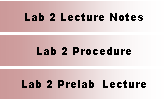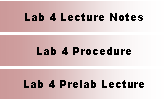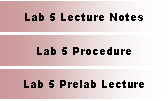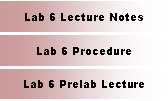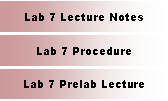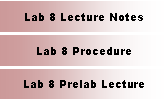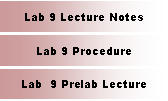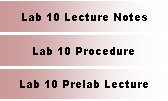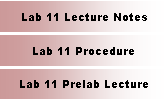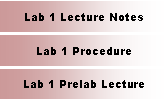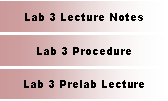
|
SIU Home | Technology Home | Complete Course Syllabus | ET 332b Intro Course Outcomes | Policies and Grading | Lab Activities | Homework | Lecture Notes
Copyright © 2016 |
|
Department of Technology |
|
ET 332b Ac Machines and Power Systems Laboratory Activities and Experiments |
|
Mailing Address: 1230 Lincoln Drive Room D110 Carbondale, IL 62901 |
|
Instructor Contact Information |
|
Phone: 618-453-7839 E-mail: powerguy@siu.edu Skype Name: carl.spezia |

|
These are the descriptions of the course lab experiences. The materials for performing the lab are available from the links at the left of the description. View the prelab presentation prior to attending/attempting the lab activities.
1.) Power Laboratory Safety and Work Procedures/Delta and Wye Voltage Connections (Hampden Experiment 3)
Students learn safety rules for working with high (above electronic board level) voltages. Avoiding electric shock and other safety hazards encountered in the power lab are covered. This lab covers the basic operation of the transformers, fractional-horsepower ac motors and alternators. Students perform lab experiments to prove voltage relationships for fundamental three phase connections. Students observe three-phase alternator operation.
2.) Wye Connected Alternators (Hampden Experiment 4)
Students observe the effects of load balance on a wye-connected alternator. Students see a practical application of Kirchhoff's current law for ac systems. Phasor addition of currents produces a net current of zero in the neutral conductor of a wye- connected load. The experiment demonstrates the effect of unbalance on the current flow in the neutral.
3.) Transformer Voltage, Current and Impedance Ratios (Handout Experiment 2)
This experiment examines ideal and non-ideal operation of a transformer. The turns ratio is used to determine how a transformer changes voltage, current and impedance levels. The experiment shows how to derive the ratios for each of these quantities. The effects of adding load on the ideal transformer ratio formulas are experimentally determined.
4.) Transformer Open Circuit Test (Handout Experiment 3)
The effects of magnetizing the iron core of a transformer are included in the basic theory of the transformer. The exciting current of a small transformer is measured. The power losses of a transformer core are measured. These values are used to determine an equivalent circuit that accounts for the magnetizing effects of the iron core.
5.) Transformer Short Circuit Test (Hampden Experiment 4)
The series impedance effects of a transformer are identified and measured experimentally. The leakage reactance and the series winding resistances are measured using a method called the short circuit test. These effects are included in a model that more accurately represents the actual operation of a transformer under load.
6.) Direction of Rotation of Three-Phase Motors (Hampden Experiment 12)
The effects of phase sequence on the direction of motor rotation are examined. Students will be able to correctly connect a three-phase motor to a voltage supply and have it rotate in the desired direction. The experiment explains the relationship between motor poles and synchronous speed.
7.) Starting Characteristics of Squirrel-cage Induction Motors (Hampden Experiment 13)
The electrical and mechanical characteristics of a squirrel-cage induction motor during start-up are explored experimentally. The maximum torque of a three-phase motor is estimated from reduced voltage tests. The mathematical relationships between motor terminal voltage and torque are used to make this calculation.
8.) Running Characteristics of Squirrel-cage Induction Motors (Hampden Experiment 14)
Students will observe the changes on motor speed and terminal current as it is loaded. The two-wattmeter method of active power and power factor measurement is introduced and used to measure quantities in this experiment.
9.) Losses and Efficiency of Induction Motors (Hampden Experiment 16)
The power losses are measured and an operating efficiency is computed for a fractional horsepower motor. The types of losses incurred in induction motor operation are identified and measured either directly or indirectly. A locked rotor test is performed to find the equivalent resistance of the motor.
10.) Starting and Synchronizing Synchronous Machines (Hampden Experiment 19)
The synchronous machine can operate as either a generator or motor. In either case, procedures must be followed to safely connect the machine to the system. Synchronous machines must be rotating at nearly synchronous speed before they are connected to the power system. The experiment shows how the synchronous machine is started and how it operates under load.
11.) Load Characteristics of Ac Generators (Hampden Experiment 5)
The load-terminal voltage characteristics of an alternator are experimentally determined. Resistive and reactive load combinations are connected to the terminals of a small alternator. The effects of armature resistance, reactance, and armature reaction are discussed and the observed in practice. The effects of capacitive and inductive loads on the terminal voltage and power factor are also observed.
12.) Paralleling Alternators (Hampden Experiment 7)
The necessary conditions for the parallel operation of alternators are examined. An alternator is synchronized with and infinite bus using phasing lamps. Two alternators are paralleled using phasing lamps. The factors that affect power flow and operating frequency are observed.
|
Lab Material Downloads |

